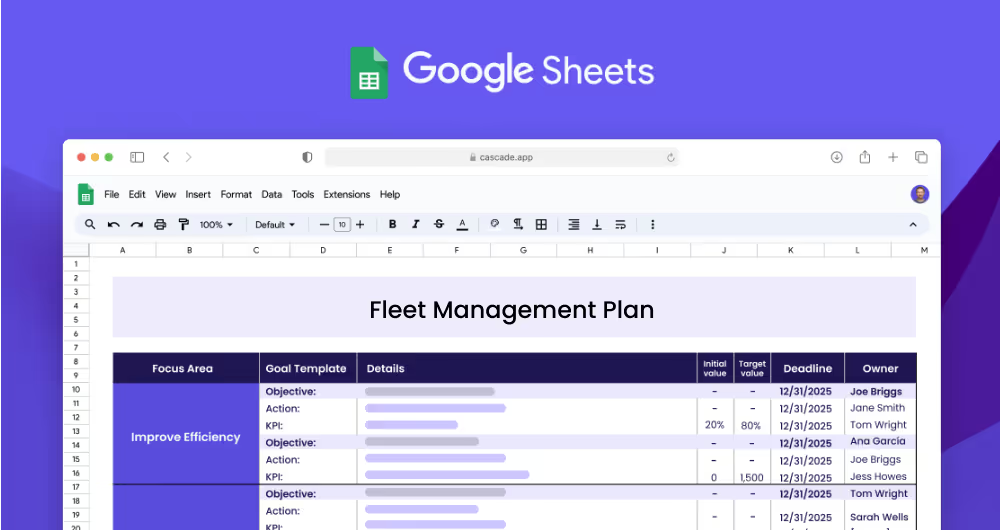A Fleet Management Plan outlines the strategies, objectives, and actions that are necessary to manage a fleet of vehicles. It outlines the focus areas, objectives, projects, and key performance indicators (KPIs) that need to be addressed in order to create a successful plan. The plan should also include the resources, personnel, and budget necessary to achieve success. By outlining the steps necessary to manage a fleet of vehicles, a Fleet Management Plan can help transportation and logistics teams to develop a comprehensive, effective, and efficient plan for managing their fleet.
Each focus area has its own objectives, projects, and KPIs to ensure that the strategy is comprehensive and effective.
This Fleet Management Plan template is designed for transportation and logistics teams who are looking to create a comprehensive plan to manage their fleet of vehicles. It provides a clear framework for outlining the focus areas, objectives, projects, and KPIs that are necessary for success. This template is also customizable, so teams can tailor the plan to their unique needs and adjust as necessary.
Focus areas are the overarching categories or themes that guide the Fleet Management Plan. Examples of focus areas could include reducing fleet maintenance costs, improving fleet safety, or increasing driver productivity. Teams should break down each focus area into specific objectives and projects that can be tackled through measurable KPIs.
Objectives are the goals that need to be accomplished within each focus area. These objectives should be specific, measurable, and actionable. Teams should consider what they want to achieve and how they can achieve it.
Examples of some objectives for the focus area of Reduce Fleet Maintenance Costs could be: Optimize Vehicle Maintenance, and Increase Fuel Efficiency.
Key performance indicators (KPIs) are the metrics that will be used to measure the success of the objectives. These KPIs should be specific and measurable, such as reducing yearly maintenance costs or increasing GPS coverage by a certain percentage. Teams should set initial and target values for each KPI.
Projects (or actions) are the steps that need to be taken in order to achieve the KPIs. These projects should be specific and actionable, such as installing fuel-efficient tires or training drivers on safety protocols. Teams should consider what resources and personnel are necessary to complete each project.
If you’re ready to accelerate your strategy and see faster results, consider using Cascade Strategy Execution Software. Unlike spreadsheets, Cascade provides a streamlined platform designed to help you create, track, and execute your strategy with ease. Sign-up for free or book a demo with one of our strategy experts to get started today!


